Poisoned Chalice Part 3:
Marvelman Falls
[Previous chapters: Introduction, 1: Prehistory, 2: Marvelman Rises]
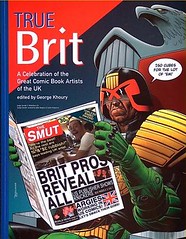
Well, I had decided to do strip work after an ex-student had come back to the college to show off a page of cowboy artwork that he had done. So I went to see a man called Ted Holmes at Amalgamated Press who gave me a tryout, which I failed!! […] Anyway he paid me for the art and he said, ‘Well look, why don’t you try Mick Anglo,’ who was the bottom of the bottom, you know, you can’t get any lower than Mick Anglo. So I did and he paid me a pound a page for black-and-white and he gave me a tryout and he said okay, and that’s how I started. […] He just sort of said ‘off you go’ and he gave me a few scripts to start with, but after a while they dried up and I started writing my own stories.
In general, the creative process on the Marvelman stories seems to have been as described by Don Lawrence; a little editorial guidance at first, and then, as they got the hang of it, the artists were left more and more to create their own stories. Lawrence, again in True Brit, said,
I did everything except the lettering. I mean I pencilled in the word balloons and the lettering, but Mick would ink the lettering. We would agree on the story and I would write it out, then Mick would rub out my lettering and put something totally different in his own language when he got it back.
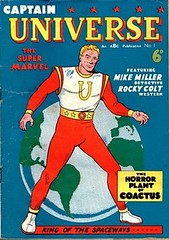
Gower Studios launched Captain Universe (ABC), derived from Captain Marvel. After two issues, the title was scrapped following threats of legal action.
Possibly the source of the threats of legal action would have been Fawcett Comics, as it seems unlikely that Leonard Miller would have threatened legal action against his own son, relating to a comic being published by a subsidiary of his own company. I asked Frank Motler about this, and he told me he had based his information on this piece from the Don Lawrence website which appears to have been written with some haste, and has a number of simple factual errors,
Don started his career with drawing superheroes. In his case it was Marvelman, a comic based on Captain Martin [sic] and originally was called Captain Universe. But after the threat of a lawsuit, the editor changed the name in Marvelman.
It’s hard to tell whether there’s any truth in this, or whether it’s just a story inspired by misunderstanding various other parts of the Marvelman prehistory, but if there is, then it would seem to show that Fawcett in America had a good idea of what was going on over in England, and would prompt the question, why would they object to Captain Universe, but not to Marvelman, unless they already knew about Marvelman, and had given it their approval?
The Don Lawrence website also says,
Don Lawrence was one of the first artists working on Marvelman. Together with Norman Light and Denis Gifford he was involved with the creation of Britain’s first superhero. The comic was produced by the Gower Street Studio owned by the legendary Mick Anglo. The company L Miller and Son were the clients for whom comics like Daniel Boone and Davy Crocket were also produced.
Don is the creator of the spin-off Marvelman Family, which he had made up all by himself.
At one point in the article in Nostalgia, Anglo describes Lawrence as ‘the first of the Marvelman artists.’ However, once again, it’s very difficult to nail down the exact timing of these events for this crucial point in time. Don Lawrence studied art at the Borough Polytechnic in London from 1949 until 1954, and his Marvelman work was his first professional comics work, so it’s entirely possible he was working freelance for Mick Anglo before he quit art school to go professional, which would have Lawrence working for Anglo at least on a freelance basis in the critical period towards the end of 1953 when all this would have occurred. On the other hand, as I’ve pointed out before, Anglo’s memory is notoriously unreliable when it comes to fine detail, so it’s impossible for me to either confirm or deny what I’ve been told.
In the meantime, six months after the launch of Marvelman, Mick Anglo formed the company Mick Anglo Limited, which was registered on the 21st of August 1954, with a nominal opening capital of £100, not an inconsiderable sum in 1954, split into one hundred shares of £1 each, with ten of those shares being drawn down and allocated, nine to Mick Anglo, and the other one to his wife, Minnie. (The reason I can quote from the documents of Mick Anglo Limited in such detail is that the company is still in existence, meaning that Companies House in the UK still have records of them which, once again, I’ll be coming back to later on.)
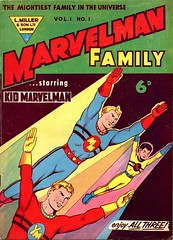
A few years in, though, cracks began to show. Mick Anglo managed to lose his best artist in 1958, as Don Lawrence explains in True Brit:
Mick and I had a row about the quality of my last story for him and he said it wasn’t up to my usual standard. I said that my worst page on my worst day was better than anything else the other people he had working for him were producing, and he said, ‘You know that may be true, but I’m paying you for your best,’ so I quit.
By the time 1959 and 1960 rolled around, however, several things seemed to go astray more or less all at once. In the first half of 1959 Leonard Miller had changed the name of his company from L Miller and Son Ltd to L Miller and Co (Hackney) Ltd, perhaps reflecting a falling out between himself and his son, Arnold. Certainly Arnold Miller had managed to bring the company some bad publicity a few years previously, resulting in his Arnold Book Company being decried on the front page of The Times in 1955. It was also in 1959 that Arnold started to seriously pursue his subsequent career as a filmmaker. In November 1959 Miller ceased publication of The Marvelman Family at issue #30, just three years after it had started, presumably due to poor sales.
Finally, and perhaps most importantly, the British government finally lifted its restrictions on the importation of non-essential goods from the USA in late 1959, restrictions which had been imposed at the start of the Second World War, twenty years beforehand. This is what had led, amongst other things, to a ban on comics imports from the US, which caused the gap in the market that allowed the Millers and other like them to successfully exploit the reprint market in Britain for American comics. After the ban was lifted Thorpe & Porter immediately started distributing American-printed Marvel and DC comics in the UK, with the first American comics to appear being cover-dated November 1959, which would normally have been on sale in the US two months beforehand, in September 1959. Due to their being shipped by sea to the UK they actually appeared on the shelves there in January 1960.

The result of all this was that Marvelman and Young Marvelman both changed from weekly to monthly schedules, beginning in both cases with issue #336, cover-dated 3rd February 1960. From this point on the majority of the material, if not indeed the entirety of it, was reprints of previously published material. Sales had slowed down on the Marvelman titles in general, and by the beginning of 1960 L Miller and Co Ltd only had a handful of titles left in print. The inevitable end wasn’t too long in coming, and both titles ended on issue #370, cover-dated February 1963. In The Origin of Marvelman Matthew H Gore postulated that there may have been another reason that Leonard Miller chose to stop publishing his Marvelman titles. He says,
Len Miller published his last issue of Marvelman in February 1963. He had been reprinting Atlas Comics for almost a decade including at least some of the superhero titles. Two issues of golden age Human Torch and two issues of golden age Captain America are known to exist, for example. By 1963, Miller’s bestsellers were filled with horror and fantasy stories from the old Atlas and emerging Marvel titles. It seems likely that Miller, who always had a strong profit motive, abandoned his Marvelman titles in order to placate the rising Marvel Comics with whom he maintained a reprint contract arrangement held over from Atlas days.
Sales of Marvelman and Young Marvelman had been declining for several years but they were not, in 1963, so low that Miller would normally have abandoned the title. Sales were, in fact, reportedly stronger for the Marvels than for a number of Miller’s other titles which were not cancelled in 1963.
Marvelman and Young Marvelman had been in reprints since 1960 and were costing Miller very little to produce. There certainly was no shortage of reprint material with over 300 issues of both titles having been produced before reprints began. Sales may have contributed to Miller dropping the Marvelman titles from his line, but it could not have been the only factor. America’s Marvel Comics almost certainly had to play a part in the decision.
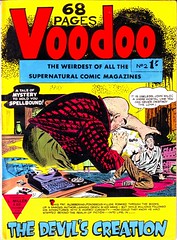
Marvelman and Young Marvelman had run for 346 issues each and, between the three Marvelman titles, there had been a total of 722 comics published in all. There had also been 19 annuals between 1954 and 1963, as well as at least three ‘Magic Ink’ colouring books during the mid-fifties. I believe there may have been other merchandise too, like costumes and games, but I’ve never actually seen any. They were probably the most successful comics to come out of that time. In a country whose comics’ readers generally didn’t have any time for superheroes, the Marvelman titles were a notable exception, and have the distinction of being the longest-running British superhero strips. It wouldn’t be until Alan Moore’s take on Captain Britain in July 1982, just after his own version of Marvelman first appeared, that the British would take another one to their hearts.
To Be Continued…
(You can find larger versions of all the images in this post here.)



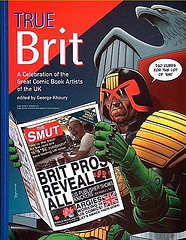
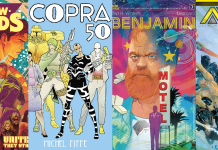
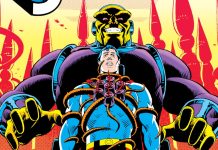
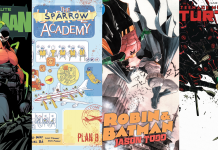





Great series. I really like how the history is being told, in context with other things happening. Reading about the history of MarvelMan, it’s not surprising that so much of the current “issues” this character has is actually part of it’s DNA, so to speak.
Thanks for this series and I hope your book gets a taker soon!
Usually after a book is published, all sorts of new information comes out about the topic. Here’s hoping these blog posts do the same and some mysteries will be solved before a book is published.
I’ve actually been working on this for a number of years, and there have been several points at which I thought I was finished, only to have something happen that meant I had to rewrite several bits of it. So, the closer I get to the present day, the more volatile it’ll all become, hopefully…
Nice series!
Please tell me this series of articles will be collected in book form. It’s a book I’d want in my comics history bookcase.
Thanks! Yes, that’s definitely the plan, I’m just looking for a publisher.
Comments are closed.